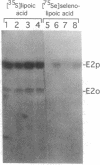Abstract
Lipoic acid is a disulfide-containing cofactor required for the reactions catalyzed by alpha-ketoacid dehydrogenase enzyme complexes. We report the chemical synthesis and biological properties of lipoic acid analogs in which one or both sulfur atoms were replaced by selenium. Replacement of either the C-6 or the C-8 sulfur atom with selenium results in lipoic acid derivatives with apparently unaltered biological properties. However, simultaneous replacement of both sulfur atoms gave an analog (selenolipoic acid) that inhibited growth of wild-type Escherichia coli when present in minimal glucose medium at 50 ng/ml. This growth inhibition was reversed by the addition of either excess lipoic acid or acetate plus succinate. Labeling experiments with [75Se]selenolipoic acid showed that this compound was efficiently incorporated into the alpha-ketoacid dehydrogenase complexes of growing cells. Spontaneously arising selenolipoic acid-resistant (slr) mutants were isolated. Two of these isolates resistant to high levels of selenolipoic acid were studied in detail. The slr-1 mutation, which was mapped to min 99.6 of the E. coli chromosome, increased the lipoate requirement of lipA strains by 4-fold and appeared to define a gene encoding a lipoate-protein ligase. The slr-7 mutation, which was mapped to min 15.25 of the chromosome, completely suppressed the lipoate requirement of lipA strains and defined a gene of unknown function in the synthesis of lipoic acid.
Full text
PDF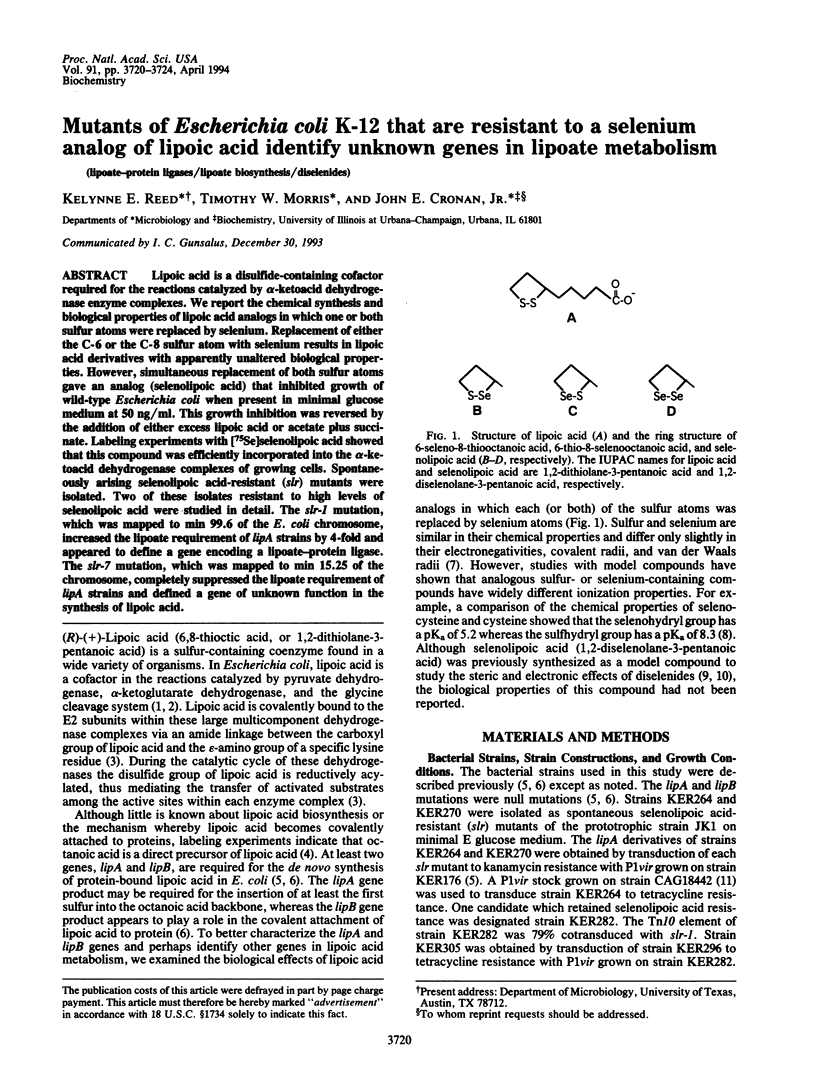
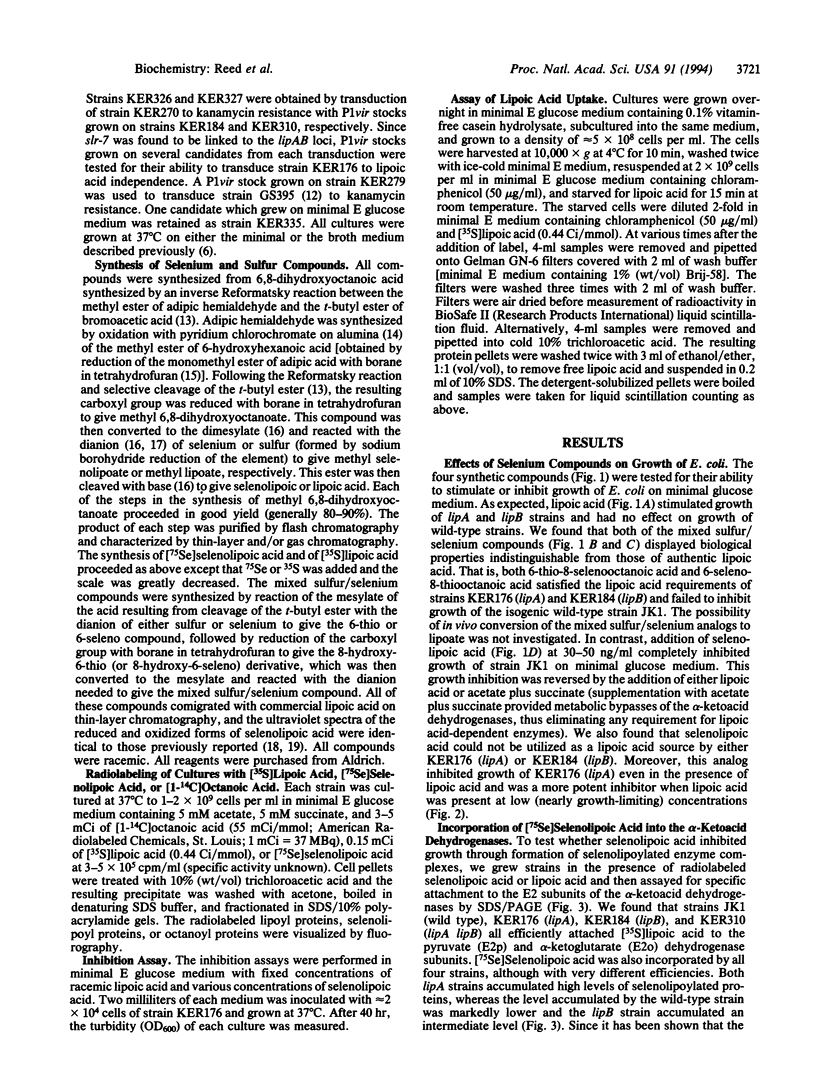
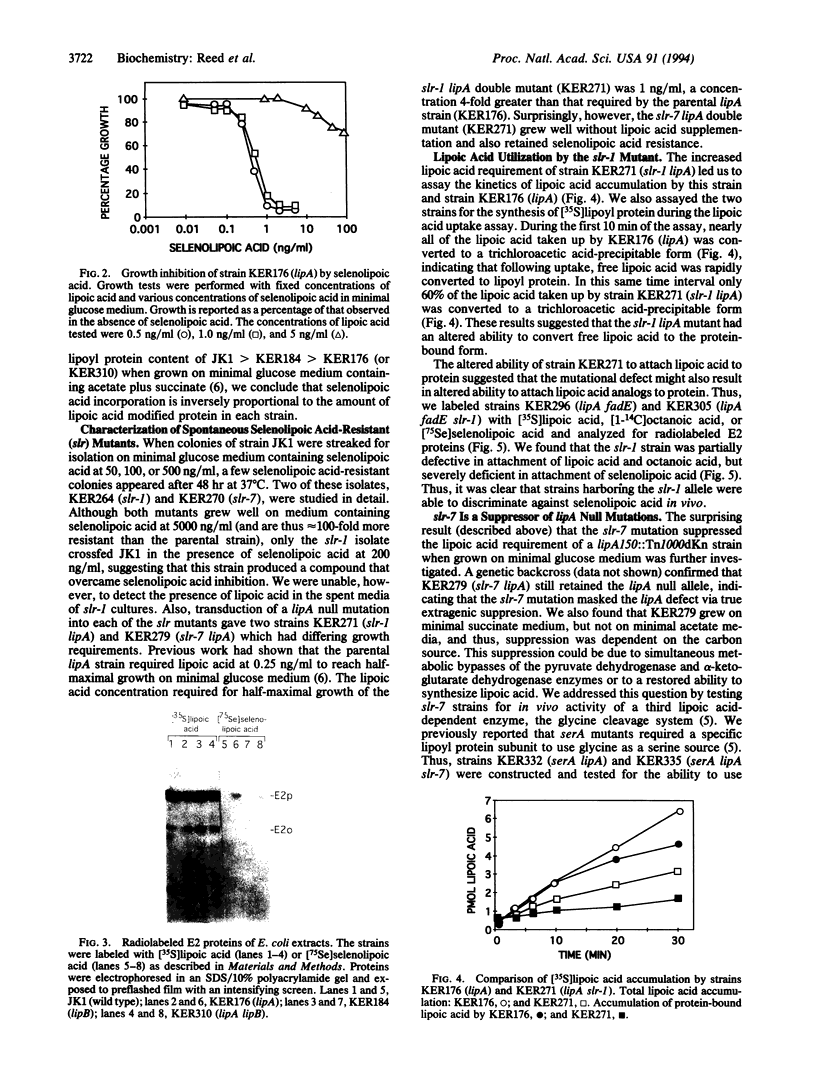
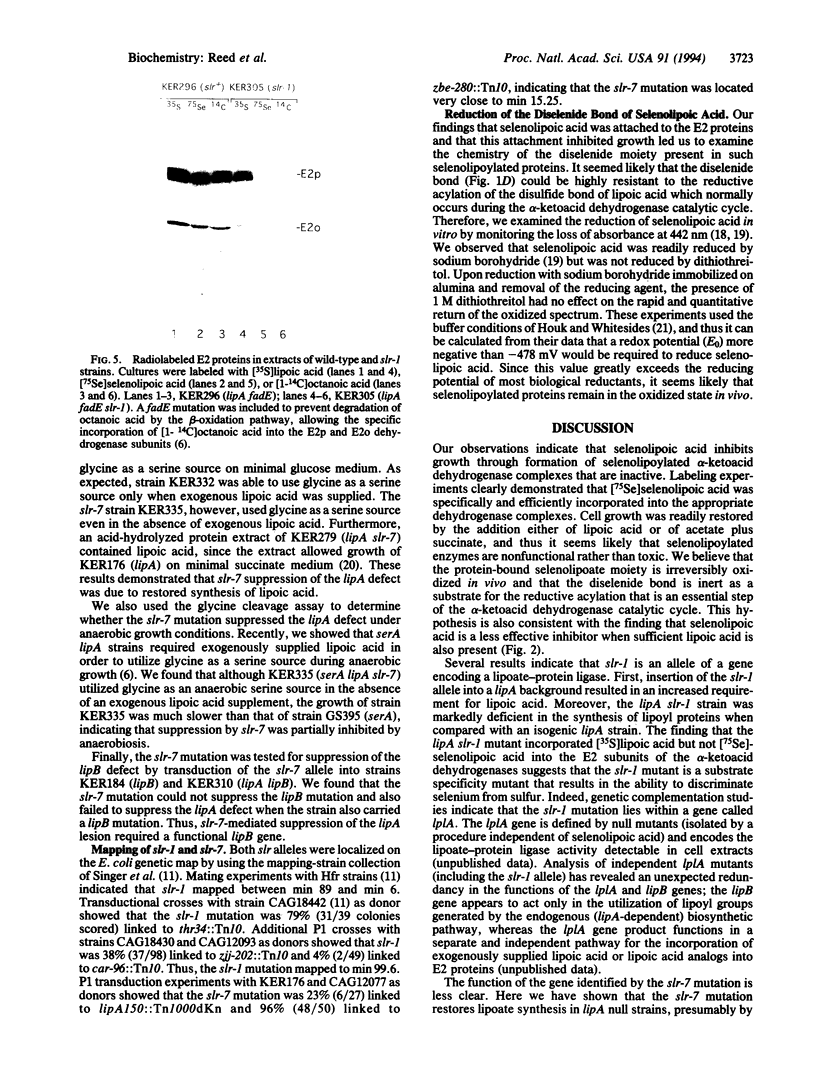
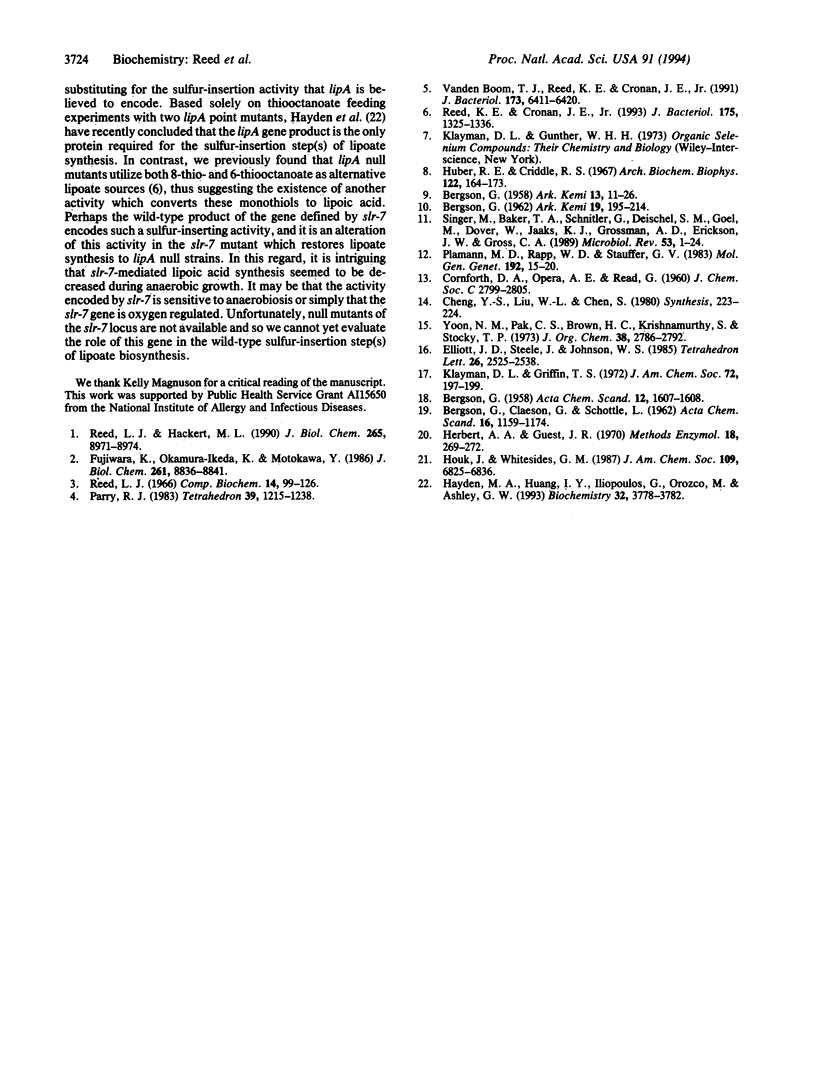
Images in this article
Selected References
These references are in PubMed. This may not be the complete list of references from this article.
- Fujiwara K., Okamura-Ikeda K., Motokawa Y. Chicken liver H-protein, a component of the glycine cleavage system. Amino acid sequence and identification of the N epsilon-lipoyllysine residue. J Biol Chem. 1986 Jul 5;261(19):8836–8841. [PubMed] [Google Scholar]
- Hayden M. A., Huang I. Y., Iliopoulos G., Orozco M., Ashley G. W. Biosynthesis of lipoic acid: characterization of the lipoic acid auxotrophs Escherichia coli W1485-lip2 and JRG33-lip9. Biochemistry. 1993 Apr 13;32(14):3778–3782. doi: 10.1021/bi00065a033. [DOI] [PubMed] [Google Scholar]
- Plamann M. D., Rapp W. D., Stauffer G. V. Escherichia coli K12 mutants defective in the glycine cleavage enzyme system. Mol Gen Genet. 1983;192(1-2):15–20. doi: 10.1007/BF00327641. [DOI] [PubMed] [Google Scholar]
- Reed K. E., Cronan J. E., Jr Lipoic acid metabolism in Escherichia coli: sequencing and functional characterization of the lipA and lipB genes. J Bacteriol. 1993 Mar;175(5):1325–1336. doi: 10.1128/jb.175.5.1325-1336.1993. [DOI] [PMC free article] [PubMed] [Google Scholar]
- Reed L. J., Hackert M. L. Structure-function relationships in dihydrolipoamide acyltransferases. J Biol Chem. 1990 Jun 5;265(16):8971–8974. [PubMed] [Google Scholar]
- Singer M., Baker T. A., Schnitzler G., Deischel S. M., Goel M., Dove W., Jaacks K. J., Grossman A. D., Erickson J. W., Gross C. A. A collection of strains containing genetically linked alternating antibiotic resistance elements for genetic mapping of Escherichia coli. Microbiol Rev. 1989 Mar;53(1):1–24. doi: 10.1128/mr.53.1.1-24.1989. [DOI] [PMC free article] [PubMed] [Google Scholar]
- Vanden Boom T. J., Reed K. E., Cronan J. E., Jr Lipoic acid metabolism in Escherichia coli: isolation of null mutants defective in lipoic acid biosynthesis, molecular cloning and characterization of the E. coli lip locus, and identification of the lipoylated protein of the glycine cleavage system. J Bacteriol. 1991 Oct;173(20):6411–6420. doi: 10.1128/jb.173.20.6411-6420.1991. [DOI] [PMC free article] [PubMed] [Google Scholar]



